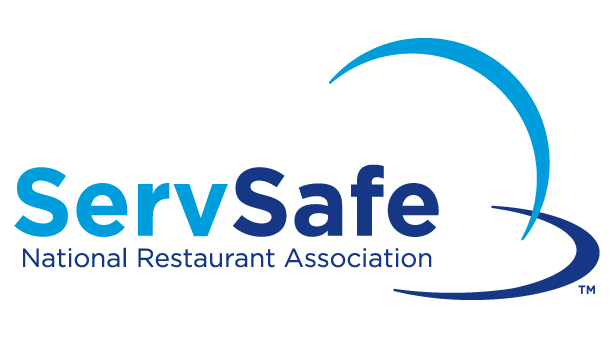Comprehensive Food Handlers Educating for Health and Security
In today's rapidly developing food service landscape, thorough food handlers training has emerged as a crucial component for making certain health and safety and security. By instilling crucial techniques related to hand health, food storage, and hygiene, this training not just reduces the risk of foodborne diseases yet additionally enhances compliance with governing requirements.
Relevance of Food Safety Training

In addition, food security training assists to guarantee that staff members are conscious of present laws and guidelines, which are vital for preserving operational licenses and staying clear of costly fines. Routine training sessions additionally offer as a platform for reinforcing ideal practices, thereby minimizing the possibility of human error, which commonly offers as a leading source of food contamination.
In addition, investing in food security training can enhance an establishment's reputation, as clients significantly focus on dining experiences that mirror high security requirements. Such aggressive measures not only shield customers however additionally add to the long-term success of food organizations. In summary, extensive food safety and security training is an essential component of food solution procedures, directly influencing both public wellness and company sustainability.
Key Principles of Health
Preserving high requirements of health is vital in any kind of food taking care of atmosphere to avoid contamination and make certain the security of customers. The crucial principles of hygiene incorporate numerous important methods that food trainers need to continually use.
First, hand hygiene is extremely important; food handlers must wash their hands completely with soap and water before and after taking care of food, in addition to after using the toilet or touching any possibly infected surfaces. Devices and surface areas should be on a regular basis cleansed and disinfected to get rid of virus. This includes tools, reducing boards, and counter tops, which must be kept in a tidy condition.


Proper food storage is likewise important; raw foods must be saved independently from cooked or ready-to-eat items to stay clear of cross-contamination. servsafe. Additionally, maintaining ideal temperature level controls is critical; subject to spoiling items should be maintained risk-free temperatures to prevent bacterial growth
Finally, individual hygiene can not be neglected. Food handlers ought to use tidy apparel, usage hair restrictions, and avoid working when ill. By sticking to these key concepts of hygiene, food handlers can significantly reduce the risk of foodborne ailments and advertise a more secure eating experience for all consumers.
Common Foodborne Health Problems
Although lots of foodborne diseases can be avoided through appropriate hygiene and risk-free food handling techniques, they stay a significant public health worry. Foodborne virus can bring about a selection of health problems, varying from light stomach distress to extreme complications and even fatality.
Common foodborne health problems include salmonellosis, brought on by Salmonella microorganisms, typically linked to undercooked fowl and eggs. Another widespread ailment is listeriosis, related to raw milk products and ready-to-eat meats, which can be particularly harmful for immunocompromised people and pregnant females. Norovirus, frequently contracted from infected food or surfaces, is known for its rapid spread and capacity to trigger episodes in common settings.
Escherichia coli (E. coli) infection, significantly linked with undercooked hamburger and contaminated produce, can result in extreme stomach cramps and kidney failure in many cases. In addition, Clostridium perfringens, frequently located in large amounts of food that are improperly kept, can cause food poisoning with symptoms appearing quickly after usage.
Understanding these diseases is crucial for food handlers, as recognition can dramatically minimize the threat of contamination and shield public health. Appropriate education and training are crucial elements in combating foodborne diseases.
Best Practices for Food Handling
Effective food managing methods are crucial in avoiding the spread of foodborne ailments. Firstly, correct hand health is necessary; food handlers need to clean their hands thoroughly with soap and water prior to and after taking care of food, especially raw meat or poultry - servsafe manager. This basic activity dramatically decreases the risk of cross-contamination
Secondly, maintaining appropriate food storage temperatures is essential. Disposable things should be kept at or listed below 40 ° F(4 ° C) to hinder bacterial growth. In addition, cooked foods need to be maintained over 140 ° F(60 ° C) up until offered.
Finally, making sure cleanliness of surfaces and equipment is necessary. Frequently disinfect kitchen counters, you can look here cutting boards, and tools, especially after preparing raw foods. Usage different cutting boards for ready-to-eat and raw foods to additionally minimize contamination risks.
In addition, when preparing food, it is essential to adhere to the principle of "first in, initially out" (FIFO) to take care of inventory efficiently and reduce wasting. Always adhere and review to food item tags for risk-free cooking temperatures and dealing with guidelines. By implementing these ideal methods, food trainers can substantially improve food safety and protect public health.
Executing a Security Society
Developing a security culture within a food managing setting is important for promoting a commitment to food safety among all employee. This society stresses the importance of food security as a shared responsibility, motivating employees to prioritize hygiene techniques consistently.
To execute a security society, companies must begin by offering detailed training that resolves food handling protocols, possible dangers, and the relevance of personal health. Training sessions must be interactive and tailored to the particular functions of personnel, guaranteeing importance and involvement.
Moreover, management plays a critical function in developing this culture. Management needs to design secure methods and communicate the relevance of food security regularly. Recognizing and awarding staff members that promote safety standards can better reinforce these habits.
Additionally, open communication channels have to be developed, allowing personnel to report safety problems without anxiety of effect. Regular security audits and responses sessions can help recognize areas for enhancement and enhance responsibility.
Inevitably, growing a safety culture not just improves compliance with food safety and security laws however additionally protects public health and wellness, fosters employee spirits, and contributes to the general success of the food dealing with establishment.
Conclusion
In conclusion, extensive food trainers training plays a pivotal role in advertising health and safety and security within food solution facilities. By gearing up workers with necessary knowledge regarding food security concepts, usual foodborne illnesses, and best methods for managing food, such training dramatically lowers health and wellness threats. Promoting a society of safety and security boosts the facility's online reputation and straightens with consumer expectations for high security criteria, inevitably adding to public health and wellness security and the total success of the food solution market.
In today's swiftly developing food solution landscape, comprehensive food trainers training browse around this web-site has arised as a critical component for guaranteeing health and security.Food security training is important for keeping high criteria in food handling and prep work, with researches showing that proper training can reduce foodborne illnesses by up to 30%. In summary, extensive food security training is a crucial component of food service procedures, straight influencing both public wellness and service sustainability.

Comments on “Crucial Abilities for Success as a ServSafe Manager in a Hectic Restaurant Environment”